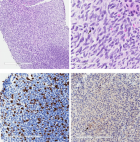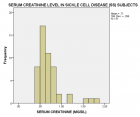Abstract
Research Article
Changes in Serum Markers of Atherogenesis and Hematological Profile after the consumption of Quail eggs
Ekpenyong CE*, Patrick ES and Akpan KS
Published: 10 May, 2017 | Volume 1 - Issue 1 | Pages: 001-011
Previous studies suggest that diets with more eggs than is recommended may be used as part of a healthy diet in some countries. However, whether quail egg diets could form part of such diet has not been explored. The aim of the present study is to evaluate the effect of quail egg consumption on serum markers of atherogenesis and hematological parameters in healthy volunteers. Thirty adult subjects participated in this study after ascertaining their baseline health status. They were fed 3 eggs per day and 8hourlyfor 30 days. They were evaluated for serum levels of cholesterol sub-fractions, AIP and hematological parameters at days 0, 10 and 30 after the consumption of quail eggs. At day10, serum levels of cholesterol sub-fractions (TG, HDL-C and LDL-C) were not significantly (p>0.05) different from the corresponding values at baseline. Serum levels of VLDL-C and calculated AIP significantly (p<0.05) decreased compared to the levels at baseline. At day 30, serum levels of HDL-C, TG and VLDL-C significantly (p<0.05) increased, while LDL-C and AIP significantly decreased. Also, total RBC, HB, PCV, MCV, MCH and MCHC were not significantly different from the levels at baseline. At day 30, RBC, PCV and HB significantly (p<0.05) increased compared to the levels at baseline, while MCV, MCH and MCHC were not significantly (p>0.05) different from the baseline values.
Indeed, long-term consumption of quail egg may be associated with improvement in serum markers of atherogenesis and hematological parameters due to its varied nutrient constituents and their activities.
Read Full Article HTML DOI: 10.29328/journal.afns.1001001 Cite this Article Read Full Article PDF
Keywords:
Quail egg; Atherosclerosis; Cardiovascular disease; Human
References
- Voutilainen S, Nurmi T, Mursu J, Rissanen TH. Carotenoids and Cardiovascular health. Am J Clin Nutr. 2006; 83: 1265-1271. Ref.: https://goo.gl/il0F51
- Mathers CD, Loncar D. Projections of global mortality and burden of disease from 2002 to 2030. PLoS Med. 2006; 3: e442. Ref.: https://goo.gl/YHtK2i
- Stamler J. Established major coronary heart disease epidemiology: from Aetiology to Public Health, Edited by M. Marmot & P. Elliot, New York. Oxford University Press. 1993; 35-66. Ref.: https://goo.gl/m6dO80
- Singh RB, Niaz MA, Ghosh S. Hyperlipidemic and antioxidant effects of Commiphora mukul as an adjunct to dietary therapy in patients with hypercholesterolemia. Cardiovasc Drugs Ther. 1993; 8: 659-664. Ref.: https://goo.gl/XBFbGo
- Tunsaringkarn T, Tungjaroenchai W, Sirwong W. Nutrient benefits of quail (coturnix japonica) eggs. Int J Sci Res Pub. 2013; 3: 1-8. Ref.: https://goo.gl/AHgm2p
- Dobrass F. Quail eggs farming in Nigeria. 2012.
- Oguwike FN, Ebede S, Offor CC, Olisah MC. Activities of quail eggs in female anemic hypertensive subjects in Ogwa Imo State, Nigeria. IOSR J Dental Med Sci. 2014; 13: 106-109. Ref.: https://goo.gl/t6VqgI
- Lalwani P. Quail egg nutrition. 2017. Ref.: https://goo.gl/J4pmYJ
- Anca T, Vacaru-opris I, Teusan V. Aspects regarding some morphological values of the domestic quail eggs (Coturix japonica). Lucr Stiint Zooteh Biotech. 2008; 41: 709-716. Ref.: https://goo.gl/V1ZYTz
- Adeniyi OT. Effect of Japanese quail egg (coturnix Japonica) egg supplementation on poloxamer 407-induced hyperlipidaemic Wister rats. An MSC Thesis. 2014. Ref.: https://goo.gl/ZXxHEi
- Lontchi-Yimagou E, Tanya A, Tchankon C, Ngondi J, Oben J. Metabolic effect of quail eggs in diabetes-induced rats: comparison with chicken eggs. Food Nutr Res. 2016; 60. Ref.: https://goo.gl/vK0j8N
- Techakriengkrai T, Klangjareonchai T, Pakpeankitwattan V, Sritara P, Roongpisuthipong C. The effect of ingestion of eggs and low density lipoprotein (LDL) oxidation on serum lipid profile in hypercholesterolemic women. Songklanakarin J Sci Technol. 2012; 34: 173-178. Ref.: https://goo.gl/Qmz1Wx
- Dobiasova M. AIP-atherogenic index of plasma as a significant predictor of cardiovascular risk: from research to practice. Vnitrni Lekarstvi. 2006; 52: 64-71. Ref.: https://goo.gl/OIfwLi
- Kastelein JJP, van der Steeg WA, Holme I, Gaffney M, Cater NB, et al. Lipids, apolipoproteins and their ratios in relation to cardiovascular events with statin treatment. Circulation. 2008; 117: 3002-3009. Ref.: https://goo.gl/rY4ROi
- Grundy SM. Oxidized LDL and atherogenesis: relation to risk factors for coronary heart disease. Clin Cardiol. 1993; 16: 3-5. Ref.: https://goo.gl/Ipefdn
- Ekpenyong CE. Micronutient vitamin deficiencies and cardiovascular disease risk: advancing current understanding. Eur J Prevent Med. 2017; 5: 1-18. Ref.: https://goo.gl/c7bktg
- Woollet LA, Spady DK, Dietschy JM. Saturated and unsaturated fatty acids independently regulate low density liporpotien receptor activity and production rate. J Lipid Res. 1992; 33: 77-88. Ref.: https://goo.gl/MQBwxt
- The Lipid Research Clinic-Coronary Prevention Trial Results (LRC-CPTR). II. The relationship of reduction of incidence of coronary heart disease. JAMA. 1984. 251: 365-374. Ref.: https://goo.gl/i99ioe
- Kannel WB, Castelli WP, Gordon T. Cholesterol in the production of atherosclerotic disease: New perspectives in the Framingham study. Ann Inter Med. 1979; 90: 85-91. Ref.: https://goo.gl/SmAvaF
- Stahl W, Sies H. Physical quenching of singlet oxygen and cis-trans isomerization of carotinoids. Ann NY Acad Sci. 1993; 691: 10-19. Ref.: https://goo.gl/QeEm2q
- Muscogiuri G, Sorice GP, Ajjan R, Mezza T, Pilza S, et al. Can vitamin D deficiency cause diabetes and cardiovascular disease? Present evidence and future perspectives. Nutr metab Cardiovascular Dis. 2012; 22: 18-27. Ref.: https://goo.gl/AhfMT6
- Ranasinghe P, Wathurapatha WS, Ishara MH, Jayawardana R, Galappatthy P, et al. Effects of zinc supplementation on serum lipids; a systematic review and meta-analysis. Nutr Metab. 2015; 12: 26. Ref.: https://goo.gl/qzRRUz
- What are the benefits of quail eggs? 1999-2012. Ref.: https://goo.gl/f0uLfR
- Ekpenyong CE, Daniel NE. Roles of diets and dietary factors in the pathogenesis, management and prevention of abnormal serum uric acid levels. J PharmaNutr. 2014; 3: 29-45. Ref.: https://goo.gl/i8Yz9E
- Gordon T, Castelli WP, Hjortland Mc, et al. High density lipoprotein as a protective factor against coronary heart disease. The Framingham study. Am J Med. 1977; 62: 707-714. Ref.: https://goo.gl/Xa8Pqi
- Wilson PW, Abbott RD, Castelli WP. High density lipoprotein cholelsterol and mortality. The Framingham heart study. Arteriosclerosis. 1988; 8: 737-741. Ref.: https://goo.gl/584kht
- Castelli WP, Garrison RJ, Wilson PWF, et al. Incidence of coronary heart disease and lipoprotein cholesterol levels. The Framingham study. JAMA. 1986; 256: 2835-2838. Ref.: https://goo.gl/fEQsOh
- Barter P. The role of HDL-cholesterol in preventing atherosclerotic disease. European Heart Journal Supplements. 2005; 7: F4-F8. Ref.: https://goo.gl/rGbF7n
- Jailal I, Freeman DA, Grundy SM. Varying susceptibility of different low density lipoprotein to oxidative modification. Arteriosc Thrombosis. 1991; 11: 482-488. Ref.: https://goo.gl/A602ce
- Feki M, Souissi M, Mokhtar E, Hsairi M, Kaabachi N,et al. Vitamin E and Coronary Heart Disease in Tunisians. Clin Chem. 2000; 46: 1401-1405. Ref.: https://goo.gl/UcGWHi
- Sikarwar MS, Patil MB. Antihyperlipidemic effect of ethanolic extraction of Hibiscus rosa Sinensis flowers in hyperlidemic rats. RGUHS J Pharm Sci. 2011; 1: 117-122. Ref.: https://goo.gl/Dm5ozI
Figures:
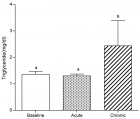
Figure 1
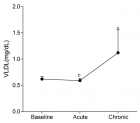
Figure 2
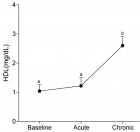
Figure 3
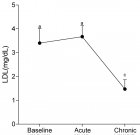
Figure 4
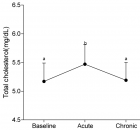
Figure 5
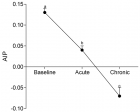
Figure 6
Similar Articles
-
Changes in Serum Markers of Atherogenesis and Hematological Profile after the consumption of Quail eggsEkpenyong CE*,Patrick ES,Akpan KS. Changes in Serum Markers of Atherogenesis and Hematological Profile after the consumption of Quail eggs. . 2017 doi: 10.29328/journal.afns.1001001; 1: 001-011
-
Do Fishes Hallucinate Human Folks?Dinesh R*,Sherry Abraham,Kathiresan K,Susitharan V,Jeyapavithran C,Paul Nathaniel T,Siva Ganesh P. Do Fishes Hallucinate Human Folks?. . 2017 doi: 10.29328/journal.afns.1001003; 1: 020-023
-
Anti-nutrient and mineral properties of Complementry Food produced from Malted Red Sorgum and Defatted Soybean Flour BlendOloye DA*,Agbaje RB,Olatunji CA,Olawale-Olakunle OE. Anti-nutrient and mineral properties of Complementry Food produced from Malted Red Sorgum and Defatted Soybean Flour Blend. . 2017 doi: 10.29328/journal.afns.1001006; 1: 033-038
-
Lemongrass tea consumption and changes in Acid-Base Balance and Electrolyte homeostasisChristopher E Ekpenyong*. Lemongrass tea consumption and changes in Acid-Base Balance and Electrolyte homeostasis. . 2018 doi: 10.29328/journal.afns.1001016; 2: 041-051
-
A new applied protocol concerning COVID-19`s pandemic control: “Outdoor Access Approach” remodel of living for ensuring better ventilationNasser Alidadi*. A new applied protocol concerning COVID-19`s pandemic control: “Outdoor Access Approach” remodel of living for ensuring better ventilation. . 2020 doi: 10.29328/journal.afns.1001024; 4: 025-028
-
Mild to moderate iodine deficiency in pregnancy: A matter of debateFereidoun Azizi*,Hossein Delshad. Mild to moderate iodine deficiency in pregnancy: A matter of debate. . 2021 doi: 10.29328/journal.afns.1001028; 5: 018-026
-
An updated review of published human health risk-benefit assessment studies in the scientific literatureTaya Huang,Cherie Ko,Karen Hooper,Benjamin PC Smith. An updated review of published human health risk-benefit assessment studies in the scientific literature. . 2022 doi: 10.29328/journal.afns.1001039; 6: 062-067
-
An overview of the influence of climate change on food security and human healthSanober Naheed*. An overview of the influence of climate change on food security and human health. . 2023 doi: 10.29328/journal.afns.1001044; 7: 001-011
-
The effects of hemp seed consumption on depression, anxiety and cognitive improvement based on machine learningJea-Bum Jung,Yong-Won Cho,Sang-Yub Kim,Soo-Yeon Chung,Kyung-Hoon Han,Byung-Joo Ham,Sung-Hee Han*. The effects of hemp seed consumption on depression, anxiety and cognitive improvement based on machine learning. . 2023 doi: 10.29328/journal.afns.1001047; 7: 032-039
-
Edible Mushrooms and Their Holistic Approach on HealthDas T, Roy B and Bhattacharyya S*. Edible Mushrooms and Their Holistic Approach on Health. . 2023 doi: 10.29328/journal.afns.1001053; 7: 078-087
Recently Viewed
-
Artificial Intelligence in the Pharmaceutical Galenic Field: A Useful Tool with Associated RisksLuisetto M*,Ferraiuolo A,Fiazza C,Cabianca L,Edbey K,Mashori GR,Abdul Hamid G,Latyshev Oleg Yurevich. Artificial Intelligence in the Pharmaceutical Galenic Field: A Useful Tool with Associated Risks. Arch Pharm Pharma Sci. 2025: doi: 10.29328/journal.apps.1001066; 9: 014-020
-
Harmonizing Artificial Intelligence Governance; A Model for Regulating a High-risk Categories and Applications in Clinical Pathology: The Evidence and some ConcernsMaxwell Omabe*. Harmonizing Artificial Intelligence Governance; A Model for Regulating a High-risk Categories and Applications in Clinical Pathology: The Evidence and some Concerns. Arch Pathol Clin Res. 2024: doi: 10.29328/journal.apcr.1001040; 8: 001-005
-
The Accuracy of pHH3 in Meningioma Grading: A Single Institution StudyMansouri Nada1, Yaiche Rahma*, Takout Khouloud, Gargouri Faten, Tlili Karima, Rachdi Mohamed Amine, Ammar Hichem, Yedeas Dahmani, Radhouane Khaled, Chkili Ridha, Msakni Issam, Laabidi Besma. The Accuracy of pHH3 in Meningioma Grading: A Single Institution Study. Arch Pathol Clin Res. 2024: doi: 10.29328/journal.apcr.1001041; 8: 006-011
-
Autoantibodies in Autoimmune Addison’s Disease: Why are they Important?Maria Rosaria De Cagna, Norma Notaristefano, Maurizio Schiavone, Gianluca Palatella, Federica Ranù, Carmela Presicci, Valerio Cecinati, Marilina Tampoia*. Autoantibodies in Autoimmune Addison’s Disease: Why are they Important?. Arch Pathol Clin Res. 2024: doi: 10.29328/journal.apcr.1001042; 8: 012-015
-
A Rare Case of Uvulitis Following Endotracheal Intubation Using C- Mac Videolaryngoscope and How To Avoid ItKiran Kuruvilla George, Jini Chirackel Thomas, Krishnan B Sivaram, Krishna Prasad T*. A Rare Case of Uvulitis Following Endotracheal Intubation Using C- Mac Videolaryngoscope and How To Avoid It. Arch Pathol Clin Res. 2024: doi: 10.29328/journal.apcr.1001043; 8: 016-020
Most Viewed
-
Evaluation of Biostimulants Based on Recovered Protein Hydrolysates from Animal By-products as Plant Growth EnhancersH Pérez-Aguilar*, M Lacruz-Asaro, F Arán-Ais. Evaluation of Biostimulants Based on Recovered Protein Hydrolysates from Animal By-products as Plant Growth Enhancers. J Plant Sci Phytopathol. 2023 doi: 10.29328/journal.jpsp.1001104; 7: 042-047
-
Sinonasal Myxoma Extending into the Orbit in a 4-Year Old: A Case PresentationJulian A Purrinos*, Ramzi Younis. Sinonasal Myxoma Extending into the Orbit in a 4-Year Old: A Case Presentation. Arch Case Rep. 2024 doi: 10.29328/journal.acr.1001099; 8: 075-077
-
Feasibility study of magnetic sensing for detecting single-neuron action potentialsDenis Tonini,Kai Wu,Renata Saha,Jian-Ping Wang*. Feasibility study of magnetic sensing for detecting single-neuron action potentials. Ann Biomed Sci Eng. 2022 doi: 10.29328/journal.abse.1001018; 6: 019-029
-
Pediatric Dysgerminoma: Unveiling a Rare Ovarian TumorFaten Limaiem*, Khalil Saffar, Ahmed Halouani. Pediatric Dysgerminoma: Unveiling a Rare Ovarian Tumor. Arch Case Rep. 2024 doi: 10.29328/journal.acr.1001087; 8: 010-013
-
Physical activity can change the physiological and psychological circumstances during COVID-19 pandemic: A narrative reviewKhashayar Maroufi*. Physical activity can change the physiological and psychological circumstances during COVID-19 pandemic: A narrative review. J Sports Med Ther. 2021 doi: 10.29328/journal.jsmt.1001051; 6: 001-007

HSPI: We're glad you're here. Please click "create a new Query" if you are a new visitor to our website and need further information from us.
If you are already a member of our network and need to keep track of any developments regarding a question you have already submitted, click "take me to my Query."









